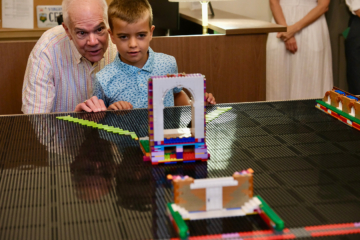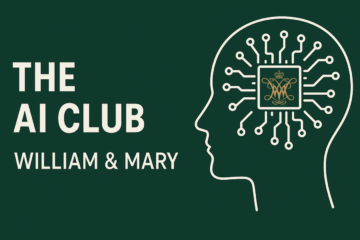Finding meaning in the danger zone
The following story originally appeared on the website for William & Mary’s Raymond A. Mason School of Business. – Ed.
When aviators face a close brush with death, their harrowing experiences often become stories — told again and again in break rooms, over beers or in quiet conversations with trusted colleagues. But what effect do these stories have on the people telling them? Can the act of storytelling itself help them make sense of their work — and even find deeper meaning in it?
That’s the question David Long, J. Edward Zollinger Term Associate Professor of Business at William & Mary’s Raymond A. Mason School of Business, set out to answer in his latest research. His contribution, “Stories from the Danger Zone: Conversational Storytelling and the Meaning of Work After a Close Brush with Death,” was recently published in the Journal of Applied Psychology. Co-authored with Jason Colquitt (University of Notre Dame), Rachel Burgess (Arizona State University) and Kevin Rockmann (George Mason University), the study offers new insight into the role of storytelling in cultivating purpose and fulfillment after life-threatening events.
“We expected to hear about trauma and disruption, and we did. But what surprised us was how many participants found meaning in the retelling — how their stories became a source of connection, self-worth, even healing,” said Long.
“Stories don’t just help us survive. They help us thrive.”
David Long
Drawing on interviews with 58 military aviators who survived crashes, ejections and mechanical failures — often outside of combat zones — the researchers discovered that storytelling played a powerful role in how individuals understood and emotionally processed their experiences. But more than that, storytelling helped participants regain a sense of purpose, dignity and community in their work.
The key finding: Conversational storytelling doesn’t just help people make sense of events (what researchers call “meaning as understanding”) — it can also help them experience “meaning as fulfillment.” Through repeated tellings, many aviators gained a renewed sense of significance (that their story might help others), belonging (that their story connected them to others) and esteem (that their survival reflected skill, courage or resilience).
“We found that it wasn’t only the content of the story that mattered — it was how it was told. Humor, poetic license and the audience’s reactions played a huge role in how meaning was created,” said Long.
Even stories with painful elements — such as the loss of a fellow crew member or perceived personal error — were used to build connection and insight, though in different ways. The researchers developed a theoretical model showing how dramatic tension (e.g., whether lives were lost or mistakes were made) influenced storytelling styles and outcomes.
Perhaps most remarkably, Long and his team show that storytelling itself can become a kind of calling. For some, sharing their experience evolved into a personal mission — to educate others, preserve memory or advocate for safety.
This research fills a major gap in organizational psychology and workplace studies. While past scholarship has focused on storytelling as a means of organizational learning or personal reflection, Long and his co-authors reveal its potential to generate authentic meaning in the wake of existential threat.
“We hope this work encourages leaders to make more space for storytelling at work — especially the messy, vulnerable kind,” Long said. “Because it turns out, stories don’t just help us survive. They help us thrive.”
Latest W&M News
- Student Health Center continues exceptional student care with AAAHC reaccreditationAAAHC accreditation, held by only seven universities in Virginia, recognizes the university's commitment to providing exceptional student-centered care.
- Brick by brick: W&M community to build model of its Historic CampusWilliam & Mary has launched a yearlong project to build a Lego model of its Historic Campus with the help of students, faculty, alumni and the Williamsburg community.
- Conflict as a catalyst for growth: W&M’s 2025 Professional Development DaysWilliam & Mary’s second annual Professional Development Days focused on navigating conflict.
- Energy sector leader Darpan Kapadia ’95 to speak at Opening ConvocationDarpan Kapadia ’95 will welcome new William & Mary students this month at Opening Convocation.
- Strategic Cultural Partnerships Faculty Fellows reshape America’s founding story as 2026 approachesEight W&M faculty awarded SCP fellowships to enrich historical narratives and strengthen civic leadership ahead of nation’s 250th anniversary.
- Bridging the digital divideTucker Peters ’28 launches W&M's first AI club.













